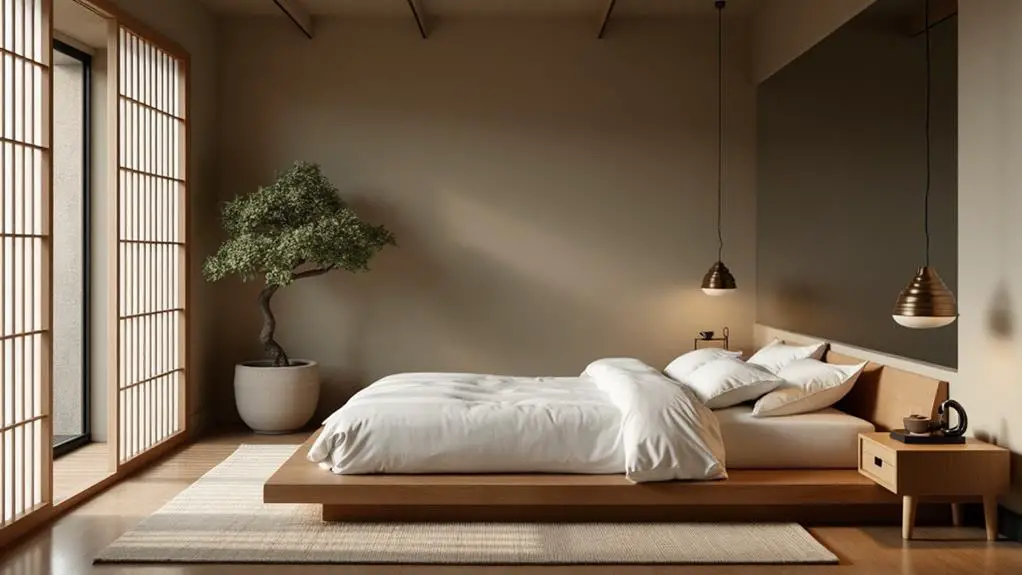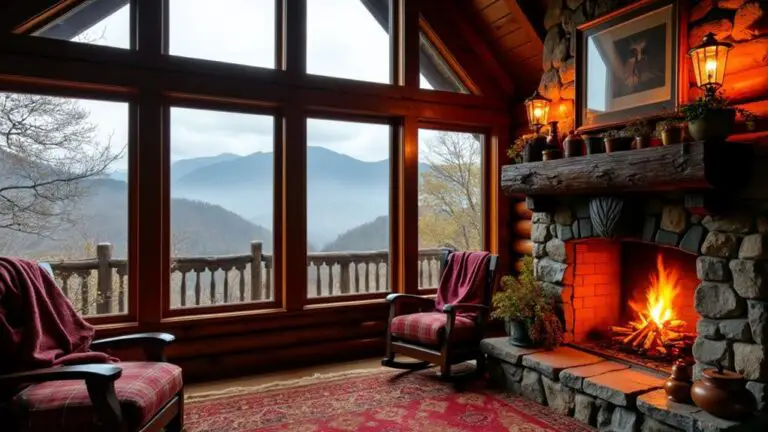Japandi Juxtaposition: East Meets North in Bedroom Design
I've discovered that Japandi bedroom design brilliantly fuses Japanese minimalism with Scandinavian functionality, creating a unique aesthetic that's both serene and practical. This style emphasizes natural materials, neutral color palettes, and clean lines. It incorporates the wabi-sabi philosophy, celebrating imperfection and transience. Furniture is often low-profile and multi-functional, maximizing space efficiency. Textures play a vital role, with layered textiles and natural elements like wood and stone adding warmth. Lighting is soft and warm, creating a zen-like ambiance. By blending these Eastern and Northern influences, Japandi design offers a harmonious, tranquil space that's as beautiful as it is functional. There's so much more to explore in this enchanting design approach.
What To Know
- Japandi bedrooms blend Japanese minimalism with Scandinavian functionality, emphasizing natural materials and neutral colors.
- Low-profile, multi-functional furniture with clean lines maximizes space and promotes tranquility.
- Textures from wood, bamboo, and textiles create visual interest while maintaining a calming atmosphere.
- Soft, warm lighting and large windows contribute to a zen-like ambiance in Japandi bedrooms.
- The wabi-sabi aesthetic celebrates imperfection, while eco-conscious principles guide material choices.
Harmonizing Eastern and Northern Aesthetics
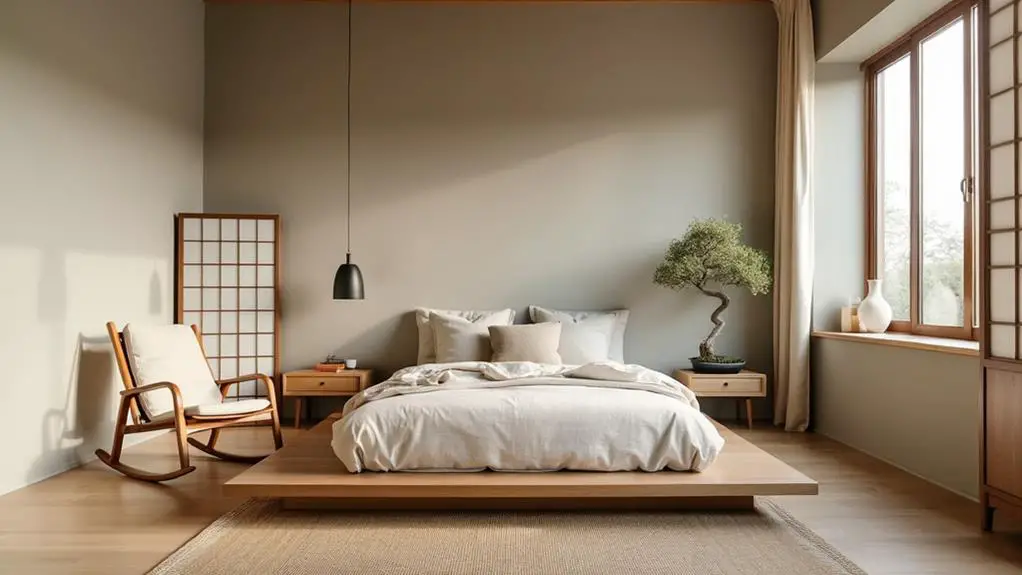
In the domain of interior design, Japandi bedrooms offer a unique fusion of Eastern and Northern aesthetics. I've found that this style harmoniously blends Japanese design's simplicity and tranquility with Scandinavian functionality and warmth. The result is a calming environment that embraces minimalist aesthetics and clean lines.
I've observed that Japandi interiors prioritize natural materials like wood, bamboo, and linen, reflecting both cultures' appreciation for organic textures. The neutral color palette, featuring soft greys, warm beiges, and muted greens, creates a serene atmosphere that combines Japanese and Scandinavian influences.
What I find most intriguing is how Japandi bedrooms incorporate the wabi-sabi aesthetic, celebrating imperfection and transience, while maintaining the practicality of Scandinavian design.
This balance creates a space that's both visually appealing and highly functional, embodying the best of both design philosophies.
Color Palettes for Tranquil Spaces
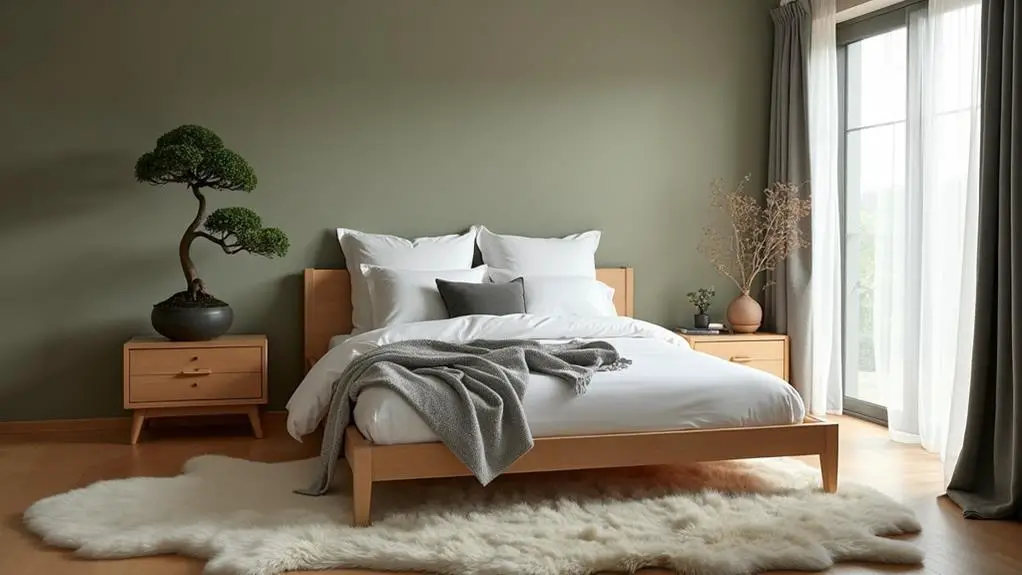
When designing a Japandi bedroom, I've found that selecting the right color palette is vital for creating a tranquil space. I focus on neutral tones like beige, gray, and off-white to establish a serene atmosphere.
To add depth, I sparingly use accent colors such as forest green, indigo, and terracotta. Earthy tones and soft greens and blues promote a connection to nature, enhancing the room's tranquility.
For a minimalist aesthetic with texture, I sometimes incorporate subtle patterned wallpaper in muted colors. Balancing these elements is essential for harmony and a peaceful space.
To evoke emotion, I consider these four aspects:
- Calmness through neutral tones
- Depth with carefully chosen accent colors
- Natural serenity from earthy hues
- Texture and interest via subtle patterns
This approach guarantees a cohesive, inviting Japandi bedroom that promotes relaxation and meditation.
Functional Furniture With Organic Appeal
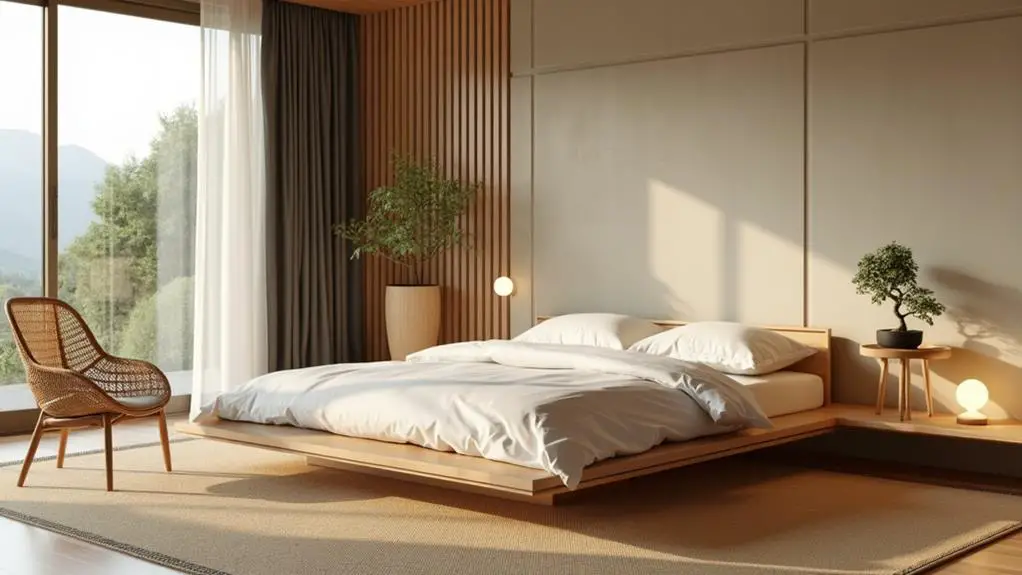
Selecting functional furniture with organic appeal is essential for creating an authentic Japandi bedroom. I've found that pieces made from natural materials like wood, bamboo, and rattan not only enhance the room's aesthetic but also promote a connection to nature.
I'm a big fan of multi-functional furniture, such as storage ottomans and platform beds with built-in drawers, which maximize space efficiency while maintaining the minimalist design ethos of Japandi style.
Low-profile furniture, particularly platform beds, fosters a sense of spaciousness and tranquility, aligning perfectly with Japanese aesthetics and Scandinavian simplicity.
I love how clean lines and uncluttered forms contribute to a serene environment, allowing for easy movement and relaxation.
In my experience, prioritizing quality craftsmanship in durable, timeless pieces reflects both Japanese and Scandinavian influences, enhancing the overall organic appeal of the space.
Textures and Natural Elements
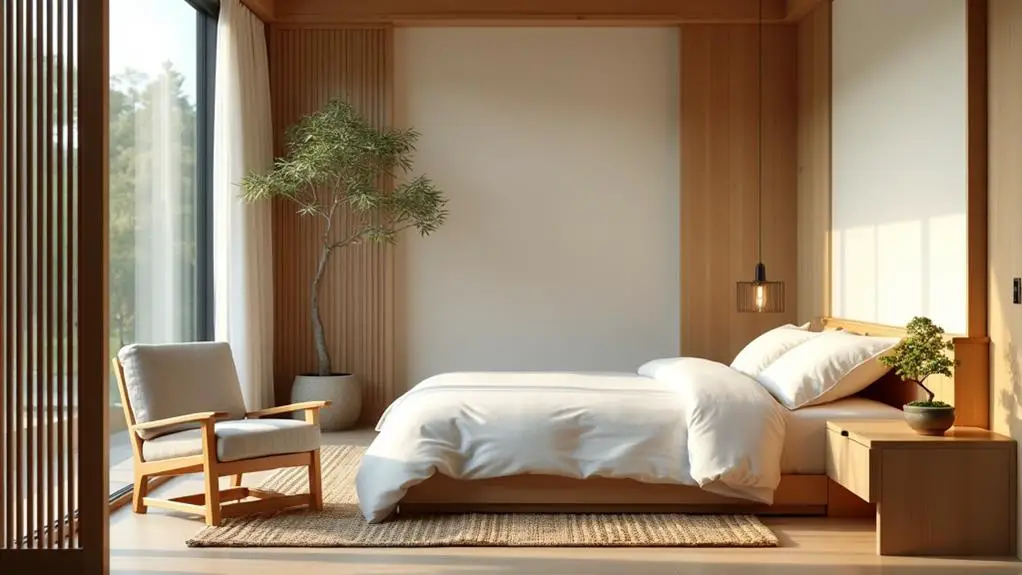
Embracing natural textures and elements is essential in creating an authentic Japandi bedroom. I've found that incorporating materials like wood, bamboo, and stone not only adds warmth but also fosters serenity.
By layering textiles such as linen and wool, I create visual interest while maintaining Japanese minimalism. Indoor plants, like kokedama and Bonsai, breathe life into the space, reinforcing the connection to nature.
The harmony of different textures creates an inviting atmosphere that:
- Soothes the soul with organic beauty
- Calms the mind through natural simplicity
- Rejuvenates the spirit with eco-friendly materials
- Inspires tranquility through balanced design
I prioritize natural, sustainable materials to align with Japandi's eco-conscious principles.
Lighting for Zen-like Ambiance
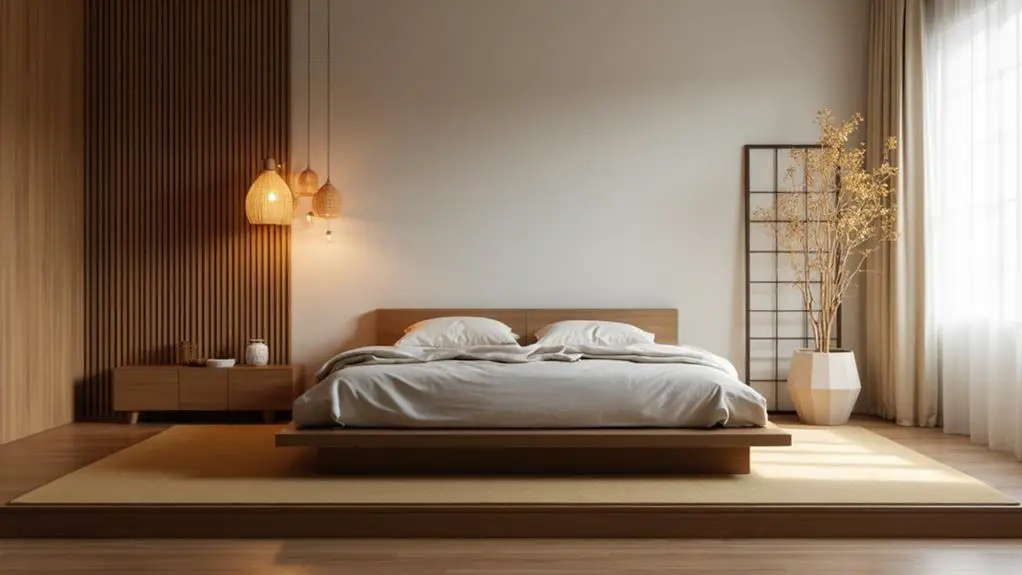
As we shift our focus to lighting, it's clear that the right illumination can elevate a Japandi bedroom from simply beautiful to truly transcendent.
I've found that soft, warm lighting is essential for creating a zen-like ambiance. I prefer using dimmable floor lamps, wall sconces, and pendant lights to achieve this peaceful atmosphere. By avoiding bright overhead fixtures and opting for layered lighting, I can create a gentle, calming glow that encourages relaxation and mindfulness practices.
Natural light plays a vital role in Japandi design, so I always incorporate large windows with minimal treatments. This allows sunlight to flood the space, creating a bright and airy environment.
To enhance functionality while maintaining serenity, I use soft diffused lights and strategically placed task lighting. Candles and lanterns add an extra touch of tranquility, perfect for fostering a truly zen-like ambiance.
Conclusion
As I stand in my Japandi-inspired bedroom, I'm struck by the serene fusion of East and North. The soft glow of a paper lantern casts gentle shadows on minimalist furniture, while a cozy sheepskin rug warms my feet. Natural textures and muted hues create a tranquil cocoon, inviting me to unwind. This harmonious blend of Japanese and Scandinavian design isn't just a style; it's a calming sanctuary where I can breathe, relax, and recharge my spirit.

